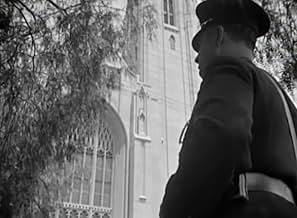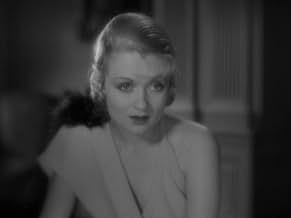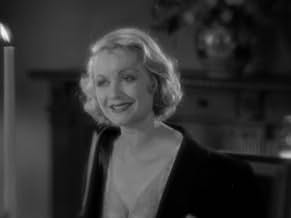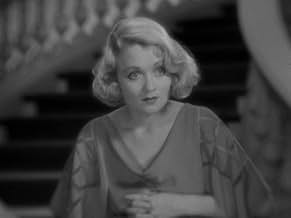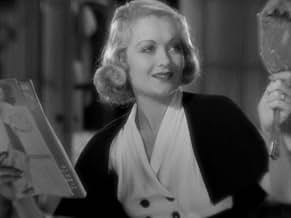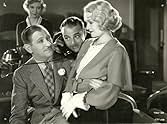NOTE IMDb
7,0/10
2,9 k
MA NOTE
Ajouter une intrigue dans votre langueThe career of a waitress takes off when she meets an amiable drunken Hollywood director.The career of a waitress takes off when she meets an amiable drunken Hollywood director.The career of a waitress takes off when she meets an amiable drunken Hollywood director.
- Réalisation
- Scénario
- Casting principal
- Nommé pour 1 Oscar
- 3 victoires et 1 nomination au total
George Reed
- Undetermined Secondary Role
- (scènes coupées)
Alice Adair
- Undetermined Secondary Role
- (non crédité)
Eddie 'Rochester' Anderson
- James - Max's Butler
- (non crédité)
Sam Armstrong
- Undetermined Secondary Role
- (non crédité)
Zeena Baer
- Secretary to Julius Saxe
- (non crédité)
King Baggot
- Department Head
- (non crédité)
Gerald Barry
- John Reed - an Actor
- (non crédité)
Floyd Bell
- Undetermined Secondary Role
- (non crédité)
Veda Buckland
- Nana - Jackie's Nursemaid
- (non crédité)
Nicholas Caruso
- Chef at Brown Derby
- (non crédité)
Lita Chevret
- Actress Filming on Movie Set
- (non crédité)
Avis à la une
One of George Cukor's better films, featuring Lowell Sherman, as an alcoholic director, Gregory Ratoff as a Sam Goldwyn like producer, and Constance Bennett playing the starstruck waitress at the Brown Derby. The film also includes Eddie "Rochester" Anderson as Sherman's sly butler. An early RKO film, it shows the working of the studio, somewhat satirically but lovingly. Also, a world premiere at Grauman's Chinese Theater. It should be better known .
One of George Cukor's earliest successes before his glory years at MGM was this classic What Price Hollywood. Done at RKO it's the story of three star crossed people and that's literal for one of them.
Constance Bennett plays Mary Evans who is discovered by drunken director Lowell Sherman while working as a waitress at the famous Brown Derby in Hollywood. In 1932 that was the place to be if one wanted to be discovered because all the Hollywood celebrities dined there at one time or another. Including those like Sherman who liked their cuisine strictly liquid and at that time illegal.
You might think that playing a movie star was no stretch for Connie Bennett. But she and her sisters Joan and Barbara were of a distinguished theatrical family with father Richard Bennett in Hollywood himself at that time. She was as far removed from Mary Evans in real life as you can get, still Bennett got deep inside the part.
Sherman might have modeled his character on any number of distinguished Hollywood lushes. He probably took bits from all of them, but his director is uniquely his own, at once self centered, talented, vain and frail.
The third part of this triangle is Neil Hamilton, polo playing scion of a prominent society family who is introduced to Bennett when he smacks her with a polo ball. It was definitely love at first sight, but love between them takes a rocky road.
Hollywood has never been easy on itself. The movie industry figures that the scandals they've had are all too public so honesty is probably the best policy. In the sound era What Price Hollywood is one of the first of a long line of critical examination of the movie industry that also includes The Big Knife, The Bad And The Beautiful, Callaway Went Thataway and Two Weeks In Another Town. And of course we can't forget A Star Is Born in its original and remakes.
What Price Hollywood got an Oscar nomination for Best Original Screenplay. As its done before the Code, it holds up well today as a mark of distinguished and mature film making.
Constance Bennett plays Mary Evans who is discovered by drunken director Lowell Sherman while working as a waitress at the famous Brown Derby in Hollywood. In 1932 that was the place to be if one wanted to be discovered because all the Hollywood celebrities dined there at one time or another. Including those like Sherman who liked their cuisine strictly liquid and at that time illegal.
You might think that playing a movie star was no stretch for Connie Bennett. But she and her sisters Joan and Barbara were of a distinguished theatrical family with father Richard Bennett in Hollywood himself at that time. She was as far removed from Mary Evans in real life as you can get, still Bennett got deep inside the part.
Sherman might have modeled his character on any number of distinguished Hollywood lushes. He probably took bits from all of them, but his director is uniquely his own, at once self centered, talented, vain and frail.
The third part of this triangle is Neil Hamilton, polo playing scion of a prominent society family who is introduced to Bennett when he smacks her with a polo ball. It was definitely love at first sight, but love between them takes a rocky road.
Hollywood has never been easy on itself. The movie industry figures that the scandals they've had are all too public so honesty is probably the best policy. In the sound era What Price Hollywood is one of the first of a long line of critical examination of the movie industry that also includes The Big Knife, The Bad And The Beautiful, Callaway Went Thataway and Two Weeks In Another Town. And of course we can't forget A Star Is Born in its original and remakes.
What Price Hollywood got an Oscar nomination for Best Original Screenplay. As its done before the Code, it holds up well today as a mark of distinguished and mature film making.
"What Price Hollywood?" is one of my favorite films of the 1930s. With loads of drama, glamour to spare, and some romance too, this movie is one of the best behind-the-scenes looks at the old Hollywood studio system that was ever made. Constance Bennett, looking her radiant best, plays the lead role with finesse. Lowell Sherman also turns in a powerful performance as a washed-up director. This movie was the basis for "A Star is Born." All in all, one great film.
This early effort by director George Cukor had such resonance that it was remade three times as A STAR IS BORN, so it lives on to satisfy the curiosity of those who admire one or more of the later productions. What holds it up after all these years are a strong and realistic performance by Lowell Sherman as a successful Hollywood film director whose alcoholism is destroying his career, decent and sometimes brilliant work by ever-stylish Constance Bennett as the ambitious waitress who becomes an overnight star, beautiful and poetic montages by Slavko Vorkapich, a generally witty and clever script by a team of about eight writers including Adela Rogers St. John and Gene Fowler, and some beautifully directed intimate scenes including the opening in which Bennett dresses for work, copying the beauty tips advertised in the fan magazine she is reading. Highlights: the screen test in which Bennett repeatedly fails to gracefully descend a staircase, deliver one line and then react to the sight of a dead body outside camera range; the filming of a nightclub scene in which Bennett delivers a love song in French (a la Dietrich in MOROCCO) as she strolls among the seated patrons. When you think about it, Bennett is really too sophisticated and worldly for this part, which is why it worked much better for the homespun Janet Gaynor five years later. It really doesn't make sense that a lady who can handle herself with complete ease after being dragged to a movie premiere and unexpectedly shoved in front of a microphone would suddenly turn into a klutz in front of a movie camera in a studio screen test. At one point Bennett is seen to converse in flawless, fluent French and we can only wonder how a lowly waitress with naïve dreams of movie stardom ever got that kind of linguistic education. The only explanation could be that the casting of Bennett required compromises. In any case, her natural charm carries her through.
At times the story drags. Neil Hamilton as the stuffed shirt husband adds to the dead weight. The sound quality in the outdoor scenes is weak and tinny. Gregory Ratoff as a studio chieftain has fun but his accent is a bit too thick given the limitations of the recording techniques of the time. Louise Beavers, as always, enlivens her small role as Bennett's maid.
At times the story drags. Neil Hamilton as the stuffed shirt husband adds to the dead weight. The sound quality in the outdoor scenes is weak and tinny. Gregory Ratoff as a studio chieftain has fun but his accent is a bit too thick given the limitations of the recording techniques of the time. Louise Beavers, as always, enlivens her small role as Bennett's maid.
The direction of George Cukor for this film is excellent. The three lead characters have three charming, yet completely different personalities. The great talent of George Cukor doesn't allow the energy of any of his characters to wane. The performance of Lowell Sherman only adds to the wonderful script, and only the innocence of Constance Bennett is able to carry the role of an aspiring starlet that makes it so believable. Neil Hamilton (later to play the 'Commissioner' on the "Batman" TV series of the mid-1960's) is excellent as the 'love interest'. But it is Lowell Sherman who steals nearly every scene in the wonderful jewel of a film. The story of this film is like many real-life stories of almost everyone who has ever worked in Hollywood - either in front of the camera or behind the lens. To me, this IS the original "A Star is Born", and that is why it is one of my favorite films of all time. From the appearance of Eddie "Rochester" Anderson to the Brown Derby to the scenes of the night life of the early days of Hollywood, "What Price Hollywood?" will always be a memorable film for me.
Le saviez-vous
- AnecdotesThis film bears such a striking resemblance to Une étoile est née (1937) that it is often considered "the original version" of that often remade classic. In fact, David O. Selznick, who produced both this film and Star is Born, was threatened with a lawsuit by this film's writers, claiming plagiarism.
- GaffesWhen the screen shows a newspaper gossip column, part of an item relating a joke about a Jewish boy and a bird can be seen. Several months later, another gossip column shows the identical item.
- Crédits fousThere is a "by" credit to Gene Fowler and Rowland Brown after the title shows, but there is also a "screenplay by" credit to Jane Murfin and Ben Markson, without leaving any clear explanation or context as to what "by" actually means. But the reality was that Fowler and Brown wrote the real screenplay, with Murfin and Markson providing the continuity.
- ConnexionsFeatured in David O. Selznick: 'Your New Producer' (1935)
- Bandes originalesThree Little Words
(1930) (uncredited)
Music by Harry Ruby
Part of a medley played during the opening credits
Meilleurs choix
Connectez-vous pour évaluer et suivre la liste de favoris afin de recevoir des recommandations personnalisées
- How long is What Price Hollywood??Alimenté par Alexa
Détails
- Date de sortie
- Pays d’origine
- Langues
- Aussi connu sous le nom de
- Hollywood Madness
- Lieux de tournage
- Société de production
- Voir plus de crédits d'entreprise sur IMDbPro
Box-office
- Budget
- 411 676 $US (estimé)
- Durée
- 1h 28min(88 min)
- Couleur
- Rapport de forme
- 1.37 : 1
Contribuer à cette page
Suggérer une modification ou ajouter du contenu manquant


